INTRODUCTION
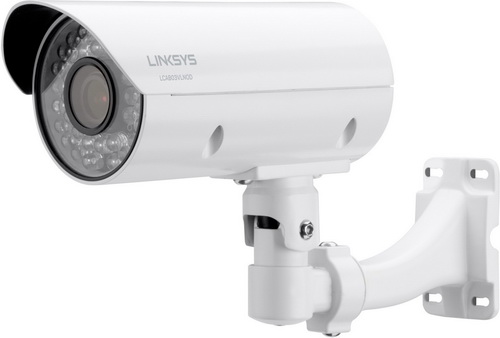
Where i live we may not have the freedom to have guns at home or carry them around for personal protection but that doesn't mean there aren't many other ways for someone to increase the level of security both at home and at work. One of the easiest ways and also one we've focused on quite a bit over the years is the installation of an IP camera which people can use to live stream everything it sees either onto their computer or their mobile devices via both wired and wireless modes. However there are many aspects one needs to take into account before getting an IP camera aside connectivity such as enclosure quality/endurance, enclosure type (bullet or dome), usage (indoor or outdoor), recording resolution, lens angle, night vision range, microSD/SD card recording, available software features and last but not least warranty period. As part of our review schedule inside 2015 we received the LCAB03VLNOD 1080p 3MP Outdoor Night Vision Bullet Camera by Linksys and today several months later (sorry for that Linksys) we can finally post our review.
The Linksys brand has pioneered wireless connectivity since its inception in 1988 with its leading innovation and engineering strategies, and best-in-class technology, design, and customer service. Linksys enables a connected lifestyle for people at home, at work and on the move, and with its award-winning products, simplifies home control, entertainment, security and Internet access through innovative features and a growing application and partner ecosystem. Linksys is part of Belkin International.
Although Linksys markets the LCAB03VLNOD as a 1080p (1920x1080 @30fps), 3MP (megapixel) outdoor IP camera that's not really the case since inside its IP67 certified enclosure (it's both weatherproof and vandal proof) it features a 5MP CMOS sensor which can output a maximum resolution of 1536p (2048x1536 @18fps). The LCAB03VLNOD can also record in H.264/MJPEG/MPEG4 (on a drive and/or the built-in microSD card slot), features two-way audio (receive/transmit), fully supports ONVIF 1.0/2.0 standards, is PoE IEEE 802.3af (Power Over Ethernet) compatible and uses F1.4 vari-focal lens (variable focal length - 3.2x Optical Zoom) which feature a viewing horizontal angle of up to 70 degrees (51 degrees vertical) with a minimum illumination of 0.5 lux which drops to 0 once all of its 24 IR LEDs are turned on. Honestly just the specs sheet of the LCAB03VLNOD is enough to impress but since over the years we've learned the hard way that specifications are not always "on par" with the product let's continue with our in-depth review.
SPECIFICATIONS AND FEATURES


PACKAGING AND CONTENTS
The LCAB03VLNOD gets shipped inside a plain cardboard box that has just the company logo and one sticker with the product name on it and a product picture.
The IP camera is safely placed inside two pieces of foam
For one such IP camera model the bundle is not really very rich and so you're only getting a cable tie, Allen key, mounting screws, quick installation guide, software CD and a piece of paper pointing to the Linksys support page where people can download the latest firmware updates.
THE LCAB03VLNOD
For a business class model the white LCAB03VLNOD is actually not very large and so the main (bullet) part of the camera measures roughly 205mm in length, 93mm in width and 85mm in height (with the base these numbers increase to roughly 280mm in length and 170mm in height).
The vari-focal lens is surrounded by a total of 24 IR LEDs capable of illuminating an area of up to 25m.
Linksys has placed a sticker with the serial and mac address numbers and barcodes on the front bottom of the camera.
All the cables are routed through the base of the camera (quite convenient) and as you can see there's not a single cable Linksys has left out (from left to right we see the RJ-45 port, analog video output, reset button, audio input, digital input/output, RS485 connector, audio output and the DC 12V in).
If you wish to play around with the vari-focal lens and/or install a microSD card you just need to remove the two vertical Philips screws and open the top of the enclosure.
WEB INTERFACE PART 1
As usual prior to accessing the IP camera we strongly suggest downloading (and then install through the Maintenance tab in the web interface) the latest FW update from the official support page (we also used version 1.01.05 for this review).
Accessing the web interface is very easy, just put the IP address in your web browser and you're good to go. The first page (Live View) has all the basic functions of the camera in one place including the 3 available stream outputs and the available protocols (HTTP, UDP, TCP).
The very first tab you will see once you enter the configuration page is the Video Settings one and through here you can setup the Wide Angle View (Normal, Wide, Ultra-Wide), select the compression codec (H.264, MJPEG, MPEG4), choose the desired resolution through a large number of 4:3 and 16:9 ones (320x240, 640x480, 720x480, 800x600, 1024x768, 1280x720, 1280x800, 1280x960, 1280x1024, 1920x1080, 2032x1536), adjust frame rate (according to the used resolution), select between variable and constant vibrate of up to 12000Kbps, enable/disable the timestamp feature setup RTSP and select the video standard (NTSC or PAL).
Through the Camera Settings tab you can adjust everything related to image quality from brightness, contrast, sharpness and saturation and up to WDR, white balance, environment control and many more.
You also have access to the IR LEDs since you can adjust the when they should turn ON.
All the audio related options for the microphone and speaker (if plugged in) are placed in the Audio Settings tab.
Under the network settings tab you can setup the IP address of the camera.
If you wish to enable UPNP and Bonjour discovery you can do so from within the discovery tab.
You may use DYNDNS and TZO to access the camera feed from afar.
The LCAB03VLNOD can use up to three different windows with its motion detection feature.
WEB INTERFACE PART 2
You can also adjust the audio detection threshold (of course you will need to plug a microphone to the camera).
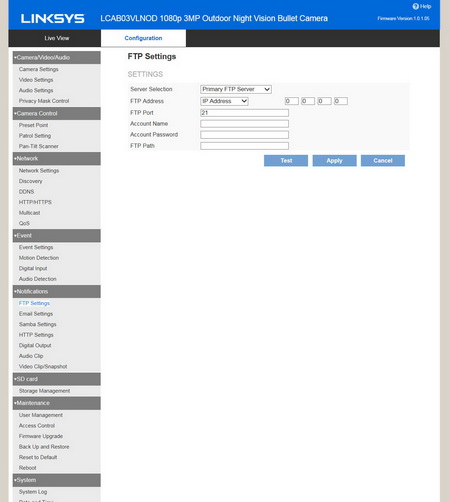
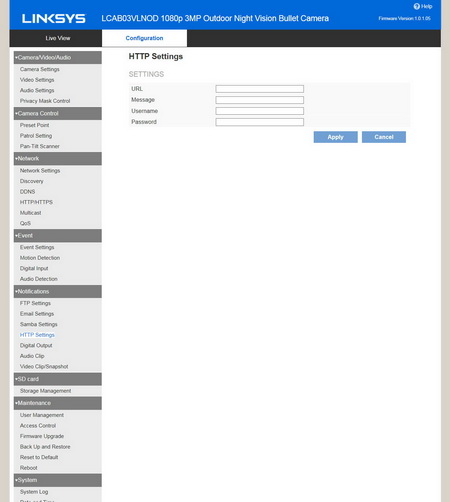
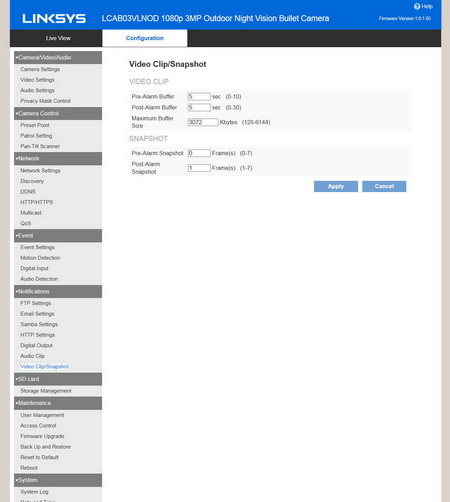
If you want to be notified of certain events you can setup the various available ones through the notifications menu.
The LCAB03VLNOD actually has space for a microSD card and through the management tab you can check the capacity and enable automatic recycle (overwrite older footage when the card has no available space) and offline record (continue recording of the card even if not connected to a network recorder).
Adding new users and administrators is something you can easily do from within the user management tab.
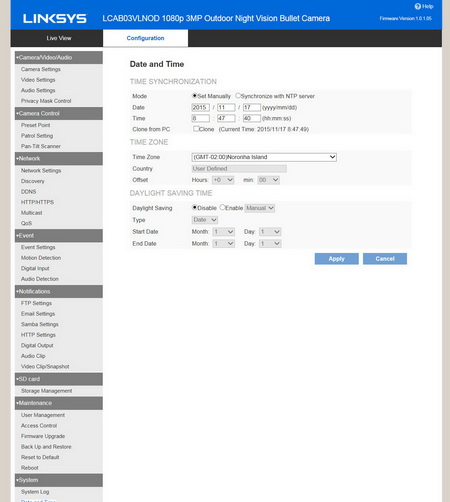
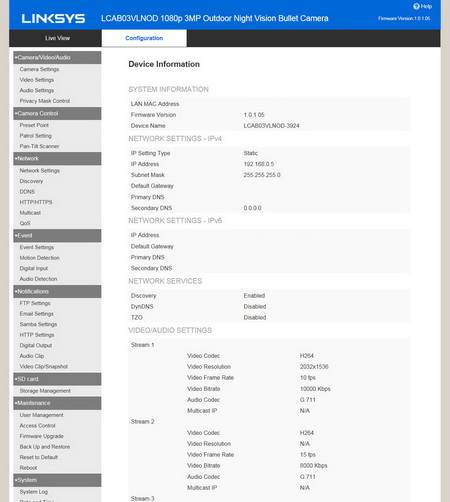
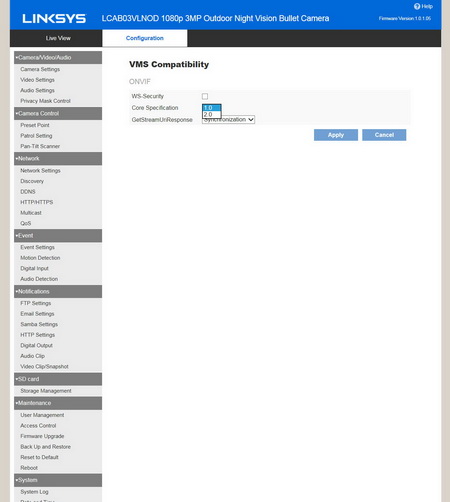
Finally you can adjust the time and date, check the device information and change between ONVIF v1.0 and v2.0 compatibility from the system menu.
VIDEO SURVEILLANCE MANAGER
If you don't know the IP of the camera and you don't know how to find it using the web interface or your router you can always use the Video Surveillance Manager since it can be used to detect any Linksys cameras on the local network (the version in the software CD should also be the latest one).
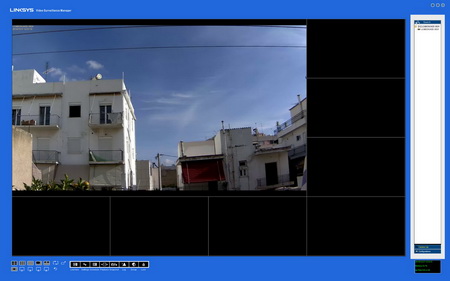
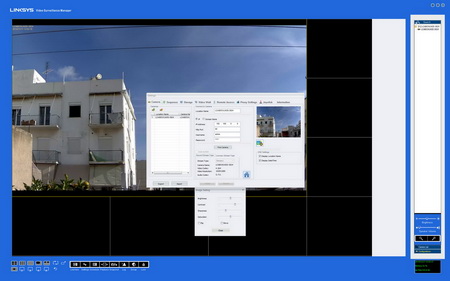
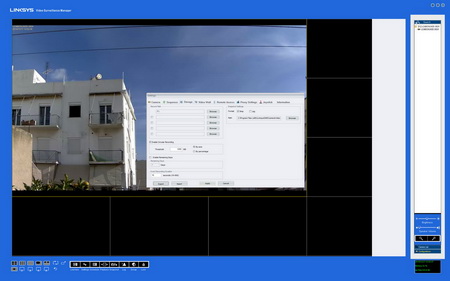
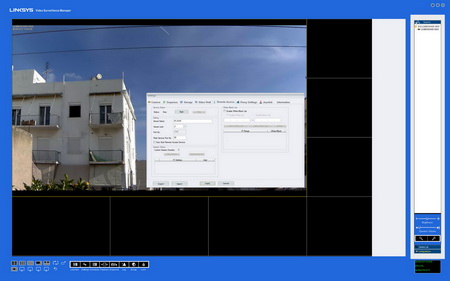
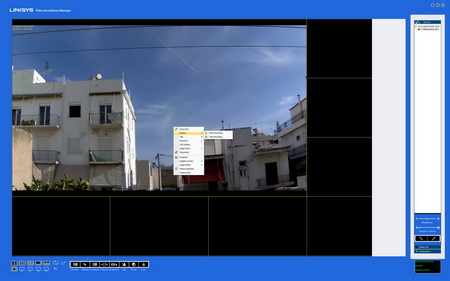

This is basically a cut-down, easier to use version of the web interface which can be used with up to a total of 64 cameras.
IMAGE QUALITY
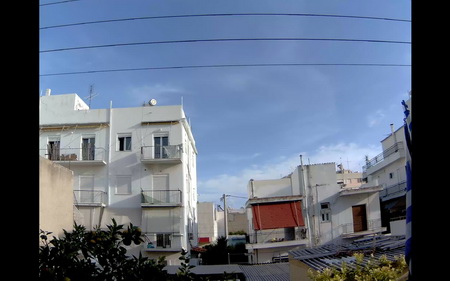

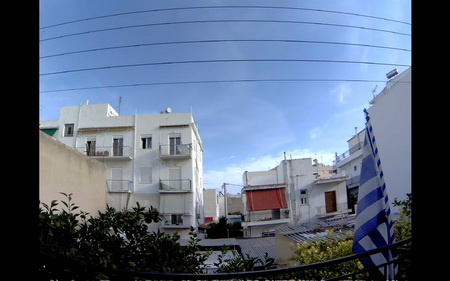
The LCAB03VLNOD is far from your average IP camera so we took snapshots of its Normal, Wide and Ultra-Wide modes in 4:3 aspect ratio at first (2032x1536p).
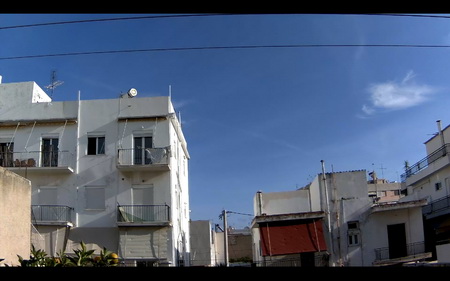

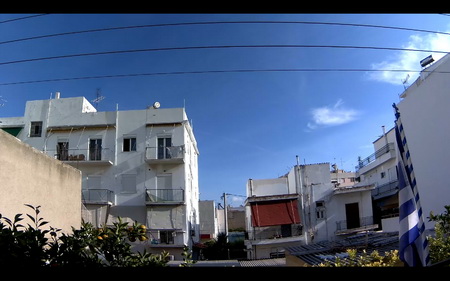
16:9 aspect ratio followed (1920x1080p - not available at 2032x1536p) and as you can all tell by the results of both although not excellent across the board still they come quite close.
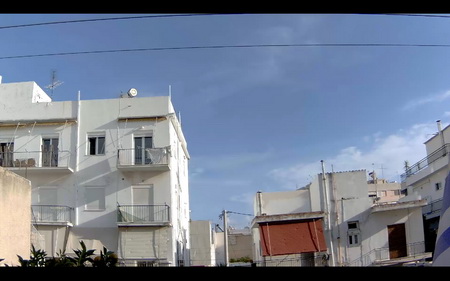
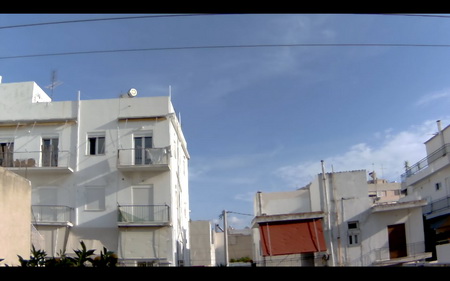
We also checked two of the 10 available denoise filters to see just how effective they are (2 and 7).
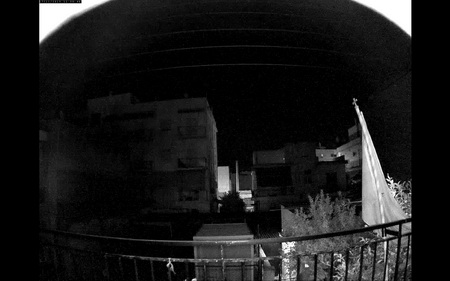

Night mode is where things get complicated since at default settings you get the above picture (without and with WDR enabled).
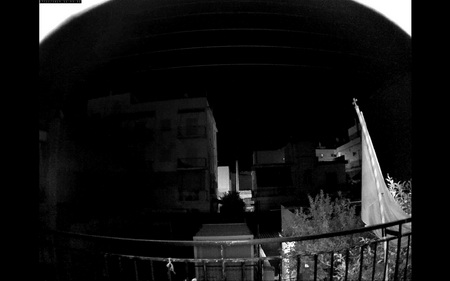

Luckily you can always use one of the denoise filters to cut down all the static as you can see (WDR off and on).
CONCLUSION
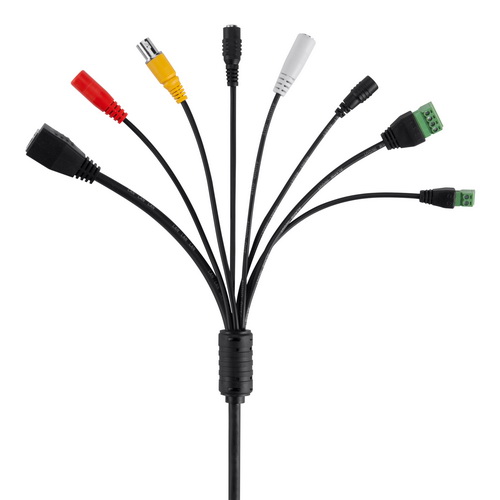
The LCAB03VLNOD 1080p 3MP Outdoor Night Vision Bullet Camera is by far the best model we've received to date at least in terms of build quality, available features and image quality during the day. Aside the static which is quite evident from our snapshots (at least at default) and which can't be removed without "smoothing" out the entire picture the LCAB03VLNOD has certain limitations. You see on one hand the maximum recording resolution in ultra-wide mode is not 2048x1536p @18fps but 2032x1536p @10fps (in normal mode you can get up to 2032x1536 @18fps while in wide mode you can get up to 2032x1536 @15fps) and on the other although Linksys placed a 5MP CMOS sensor under the hood of the LCAB03VLNOD only 3MP are effectively being used. Of course both "issues" don't change the end result which with a maximum bitrate of 12000Kbps is nothing short of impressive, at least during the day. We did delay this review a few months trying to find a valid workaround for the IR night mode with Linksys technicians since denoise tends to reduce image quality but unfortunately we were unable to (it probably has to do with the CMOS sensor so it's not something that can't be fixed via software). Last but not least the LCAB03VLNOD is fully supported by all the QNAP NAS models we've tested ever since we received it back in mid-2015 (some of our NAS reviews also included it) and to date we haven't experienced any issues with it (has been used outside the lab since it got here).
Business Class products always tend to cost more than consumer grade ones not only because they feature superior build quality but also better features and the LCAB03VLNOD by Linksys is no exception. To be more specific the LCAB03VLNOD currently retails for USD489.99 inside the USA (Amazon.com) and for 470Euros inside the EU (Amazon.co.uk) a price tag which is quite higher than what we had hoped it would be. Sure you're getting one of the best quality IP cameras in the market today with a large number of features and near-excellent image quality when the sun is still up but simply put its IR mode needs work. This of course is not enough for us to deny the LCAB03VLNOD 1080p 3MP Outdoor Night Vision Bullet Camera of our Golden Award since the fact that we've been using it from the moment it got here and will continue to speaks volumes about its quality and features (chances are that 3 years ago we'd had given it our Platinum Award) but we were just hoping for more.
 PROS
PROS
- Excellent Build Quality
- 5MP CMOS Sensor
- Vari-Focal Lens (3.2x Optical Zoom)
- Supports up to 2032x1536p @10fps
- Ultra-Wide Angle Lens (70 Degrees Horizontal)
- IP67 Weather & Vandal Proof Housing
- 25m Effective Night Vision
- Available Connectors
- ONVIF 1.0/2.0 Compatible
- Two Way Audio
- Web Interface
- Video Surveillance Software
- Cables Routed Through The Base
- Built-In SD Card Slot
CONS
- 2032x1536p @10fps In Ultra-Wide Mode (not 2048x1536p @18fps - 2032x1536p @18fps is only applicable in Normal Mode / 15fps in Wide Mode)
- Night Vision IR Mode (Too Much Static)
- Price (For Some)

 O-Sense
O-Sense





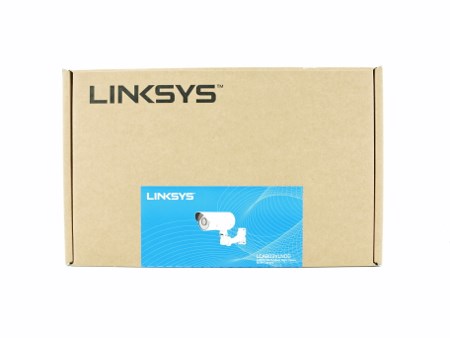
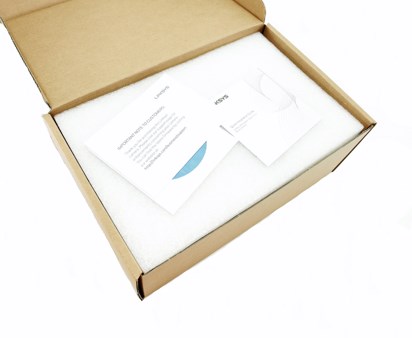
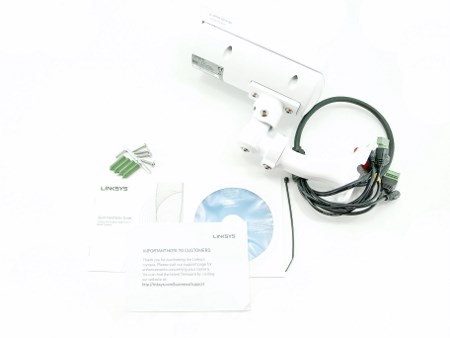
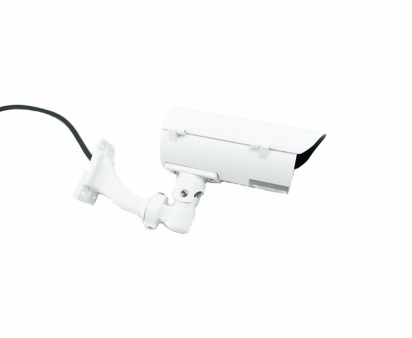

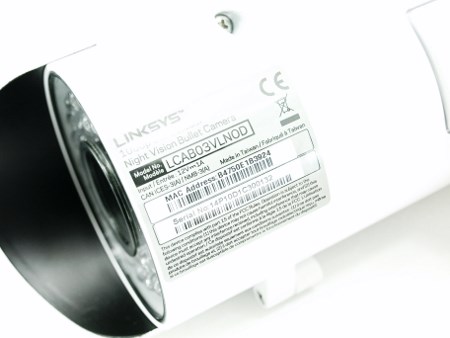
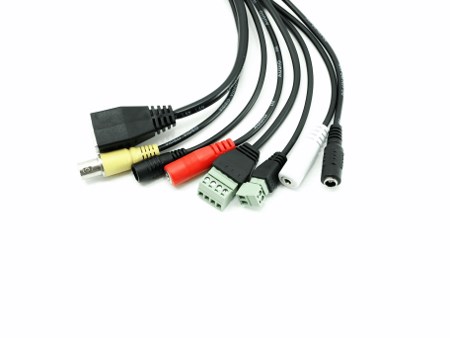

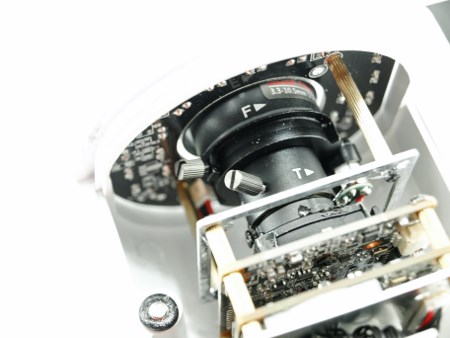
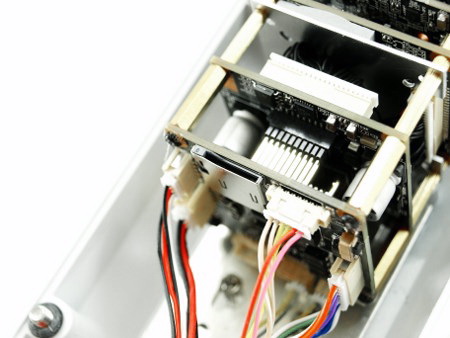

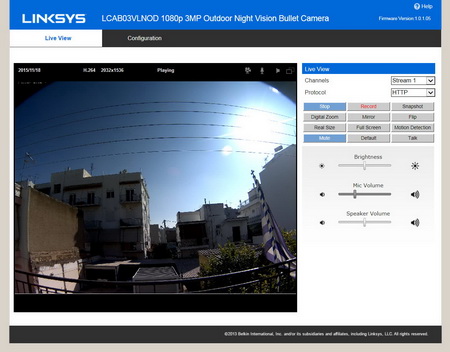
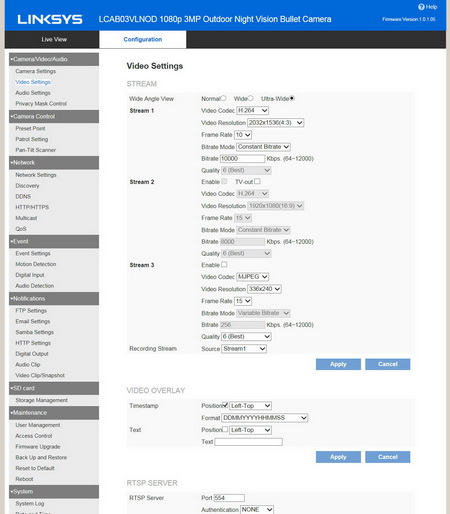
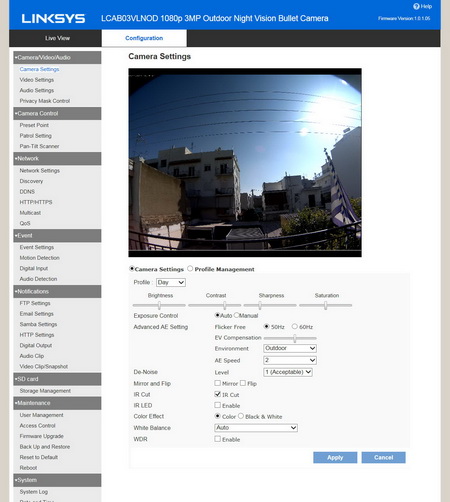
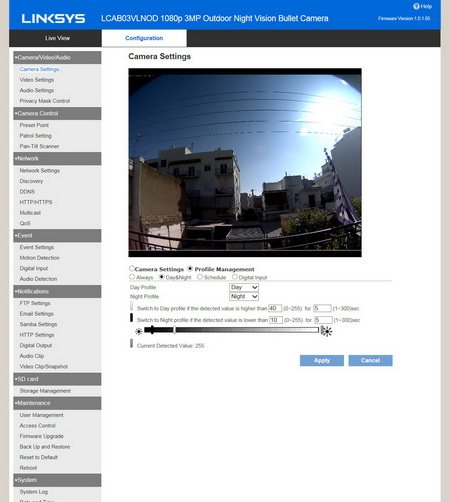
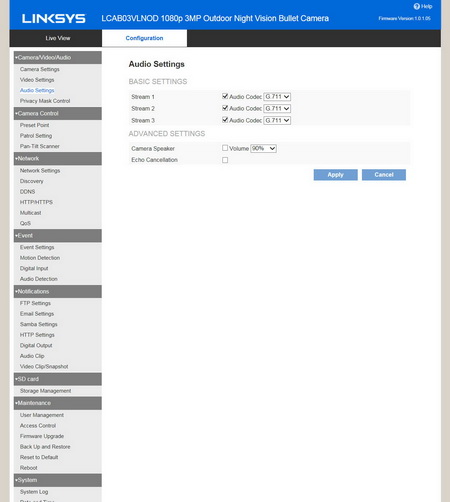
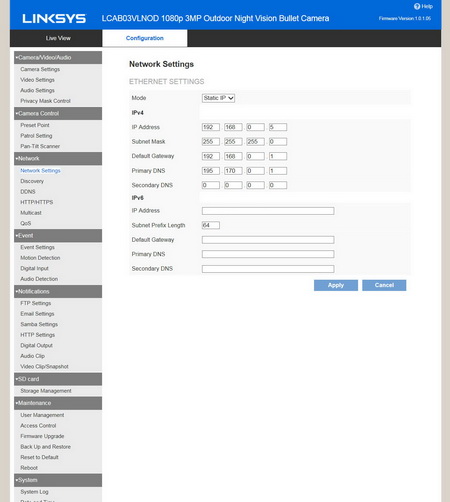
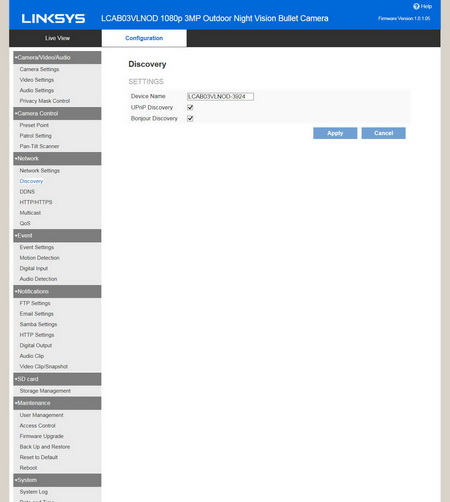
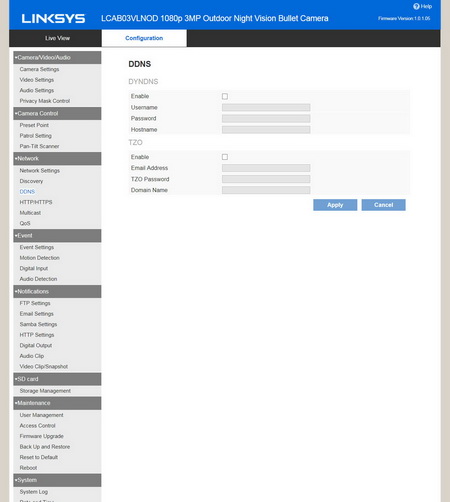
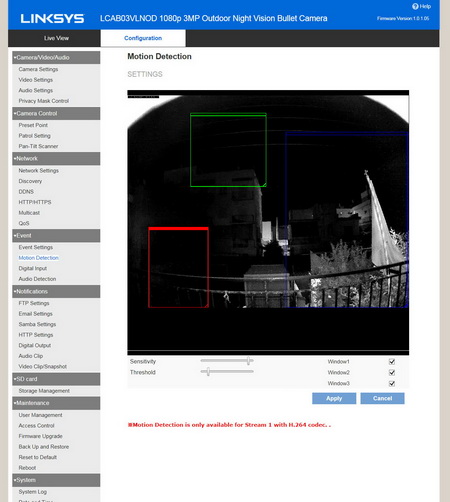
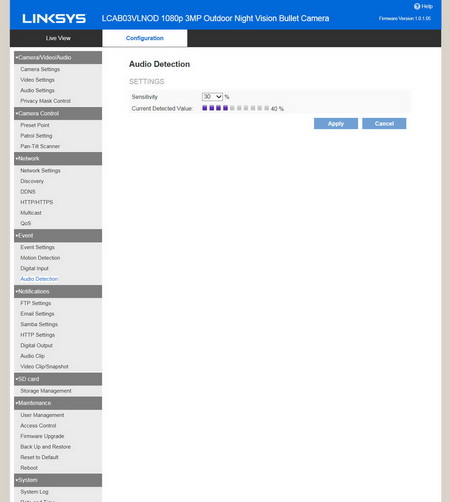
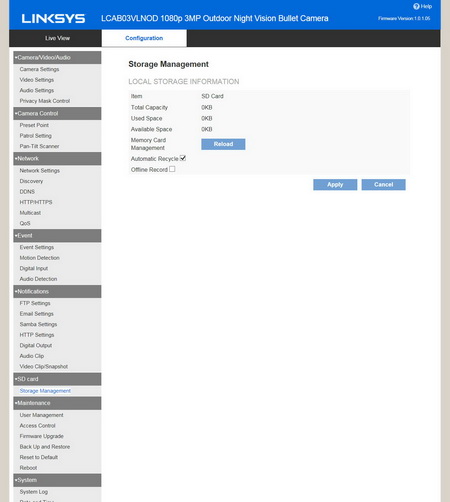
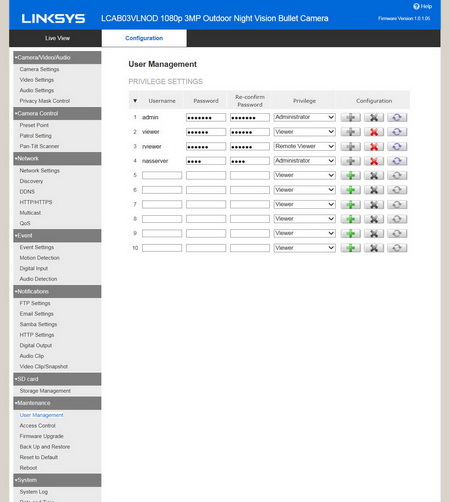
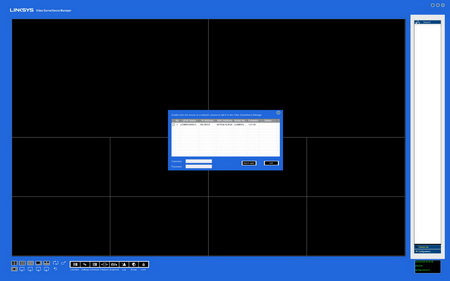


.png)

